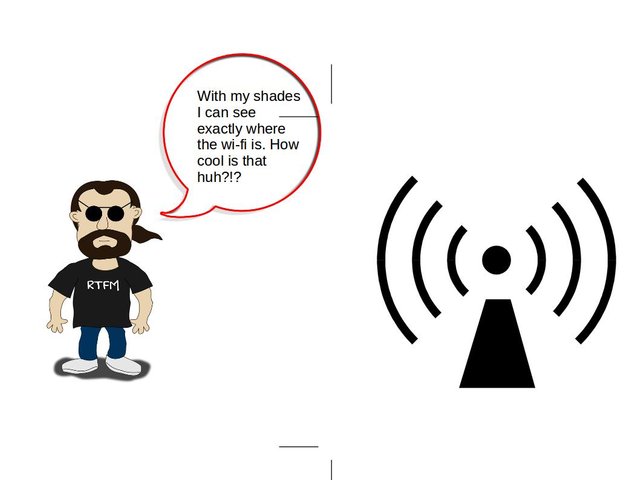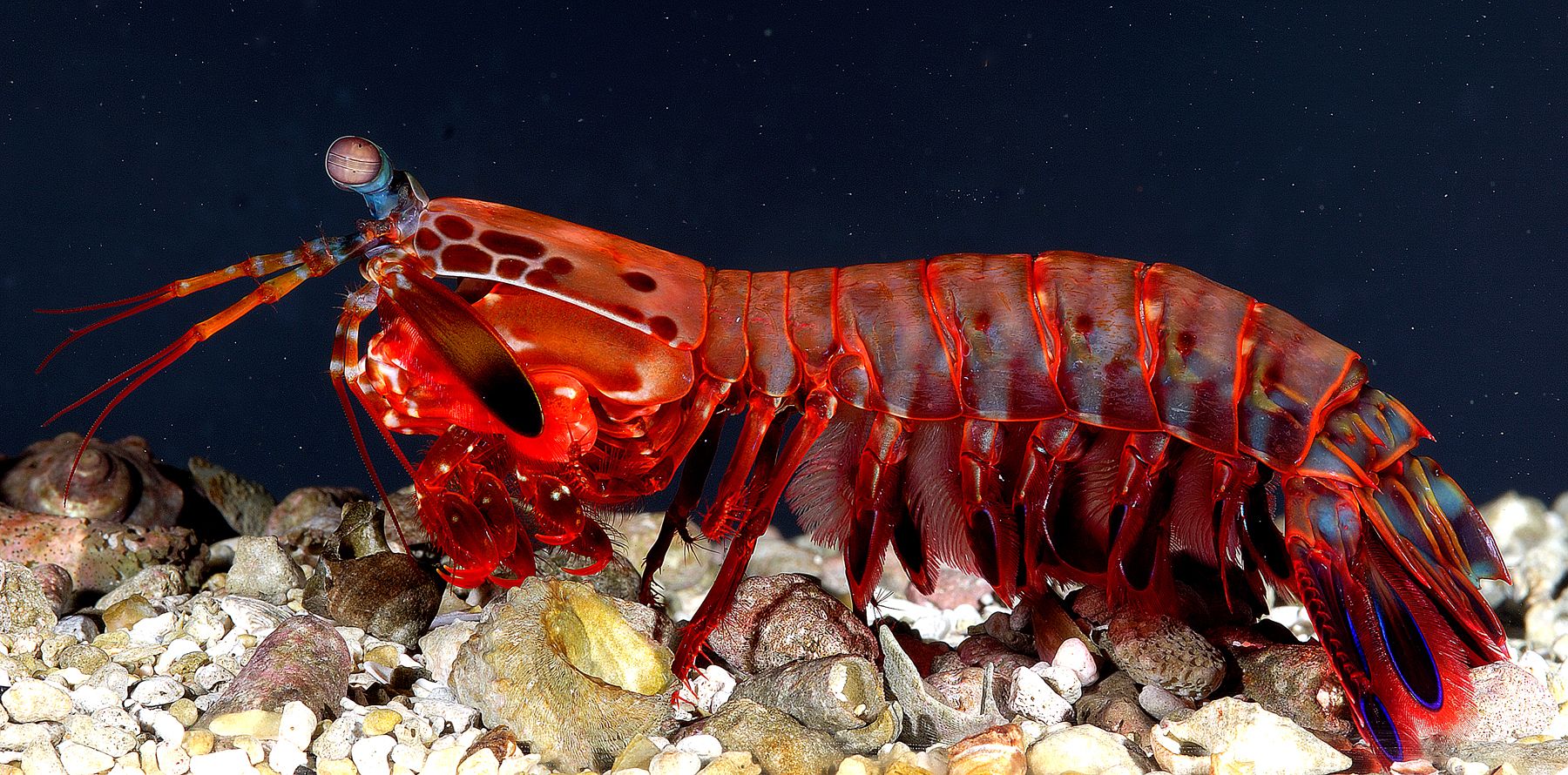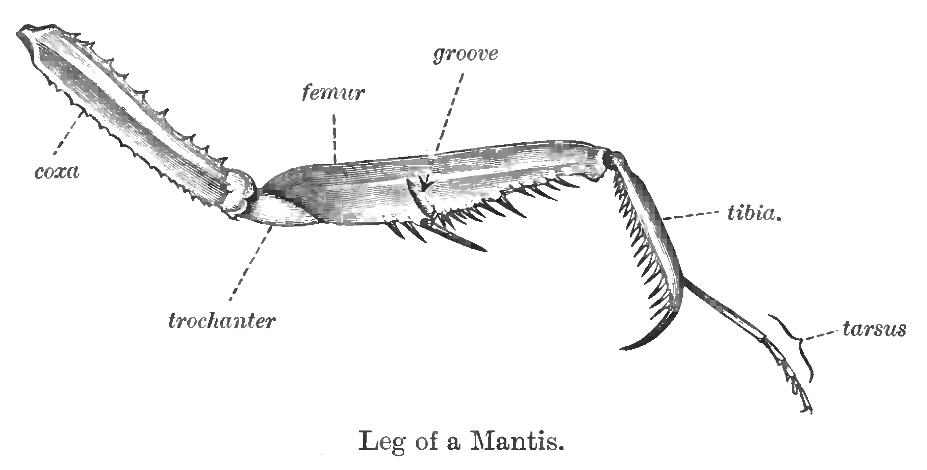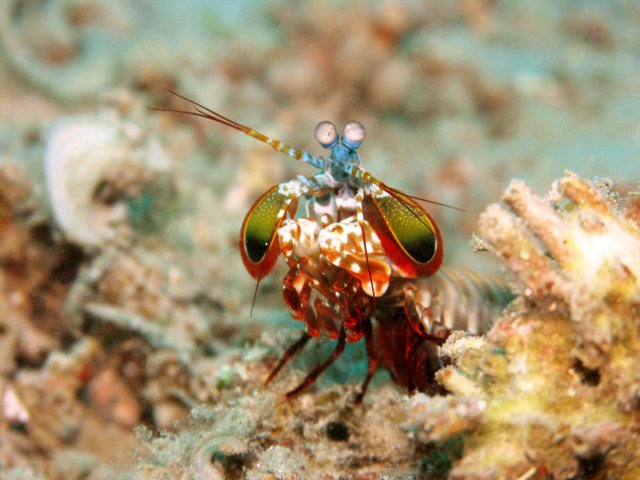Why it is crucial that we know more about the Mantis Shrimp
The mantis shrimp is a very poorly understood creature so far that live within our sea bed and usually hides between submarine rocks. They are mostly found in the Indian Ocean or in the Pacific Ocean (by the tropical zone). They can also be found in Florida [1]. Recently, there has been a growing interest from the scientific community to study that animal more in depth. In this article, we review why it is crucial that humanity understands the mantis shrimp better and how we can all further benefit from it.
Picture modified from [9]
1. The Mantis shrimp visual system is revolutionary
The mantis shrimp has 16 different type of cones. If you want some kind of reference to compare with, human being visual system only has 3 different type of cones so that means that we are much more color blinded compare to the mantis shrimp. In case you are not familiar with cones, you can think of them as cell receptors that will receive wavelength of lights. The more cones the better, and that is why dogs are color blinded (they only have 2 cones) compared to human because they can only see in black and white.
With 16 different cones, the mantis shrimp can literally see x-rays, infrared or radiowaves for instance. To give you some perspective, if the mantis shrimp was able to speak directly to you it could easily tell you were the wi-fi signal is coming from for instance. 
Picture modified from [7], [8] and [12]
This finding could benefit many industries. If we can better comprehend what the 16 cones of the mantis shrimp can do, this technology could be used in surgery or medical imaging for instance. Diseases or pathologies could be diagnosed much more accurately and rapidly than they are today. Artificial intelligence visual recognition or self-driving cars could massively benefit from this as well. As you know during winter at night many animals unintentionally get run over by cars.
2. The Mantis shrimp powerful claws could help improve many industries
The mantis shrimp has claws that are extraordinarily powerful. They are basically like hammers. When they slam/break an object, they can attain an acceleration of up to 104 km/s-2 [2]. This also creates a cavitation bubble which will later burst due external pressure (with release of light, heat waves similar to temperatures at the surface of the sun and sound). The cavitation bubble can be proportional to the firing of a 22-caliber bullet [3]. This kind of technology can be very useful in aerospace, astronomy or even in the car industry. The mantis shrimp claws can inspire the next generation of body armor, airplanes or football helmets [5].
“If you could throw a baseball as fast as the mantis shrimp punches, you'd launch the ball into space!” [6]
Picture modified from [10]
3. A huge number of mantis shrimps exist
It is estimated that there are more than 450 different species of mantis shrimp on earth [4]. This means that a lot more can be known from the mantis shrimp, given that funding and efforts is spent on it. Many technologies can be learned through this.
Picture modified from [11]
Conclusion
We can all learn a lot more from the mantis shrimp in order to create new technologies, business and value. Keep in mind that the mantis shrimp is just a grain of salt in terms of the amazing capabilities of aquatic species. As of now, less than 10% of our oceans is known.
juv79505 sincerely thank you for reading this article. Please feel free to comment below in case you have ideas, questions, suggestions or want to criticize this article. Also, note that all pictures used in this article where extracted from the google section “pictures labeled for commercial reuse”.
References
[1] https://www.livescience.com/47718-giant-alien-shrimp-caught-off-florida.html
[2] https://pateklab.biology.duke.edu/sites/pateklab.biology.duke.edu/files/Pateketal2004Nature.pdf
[3] https://asknature.org/strategy/appendage-creates-tremendous-forces/#.WmeVu3WnE8o
[4] https://en.wikipedia.org/wiki/Mantis_shrimp
[5] https://phys.org/news/2016-05-mantis-shrimp-ultra-strong-materials.html
[6] http://www.kidzone.ws/animals/mantis-shrimp.htm
Pictures
[7] https://pixabay.com/p-98736/?no_redirect
[8] https://pixabay.com/p-295465/?no_redirect
[9] https://goo.gl/SWg4Rd
[10] https://goo.gl/TpGSyC
[11] https://goo.gl/jqwmFJ
[12] https://pixabay.com/p-875185/?no_redirect


